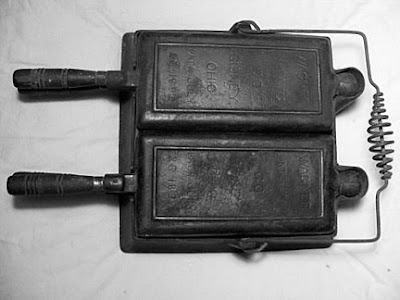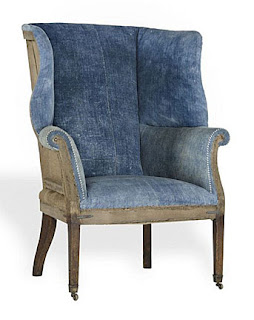 QUESTION: My great grandfather made a dollhouse for his daughter, who passed it down to her daughter, my grandmother, who passed it on to her daughter, my mother, who then passed it on to me. It’s a grand house, all handmade of wood. He styled it to the Victorian houses of the time. Over the years, each owner furnished it differently using both commercially made and homemade furnishings. When did little girls begin playing with dollhouses? And does my dollhouse have any value?
QUESTION: My great grandfather made a dollhouse for his daughter, who passed it down to her daughter, my grandmother, who passed it on to her daughter, my mother, who then passed it on to me. It’s a grand house, all handmade of wood. He styled it to the Victorian houses of the time. Over the years, each owner furnished it differently using both commercially made and homemade furnishings. When did little girls begin playing with dollhouses? And does my dollhouse have any value?
 ANSWER: Dollhouses, in one form or another, have existed for centuries, most likely beginning with the ancient Egyptians. Archaeologists discovered the earliest known examples in the Egyptian tombs of the Old Kingdom, created nearly 5,000 years ago. They placed small clay replicas of their houses and belongings in and around burials to provide the comforts of home to the deceased in the afterlife. Although today’s dollhouses are different from these ancient ones, they include purposes other than play. Over the last five centuries, dollhouses have evolved from elaborate displays for adults, to household teaching tools, to objects of imagination for children.
ANSWER: Dollhouses, in one form or another, have existed for centuries, most likely beginning with the ancient Egyptians. Archaeologists discovered the earliest known examples in the Egyptian tombs of the Old Kingdom, created nearly 5,000 years ago. They placed small clay replicas of their houses and belongings in and around burials to provide the comforts of home to the deceased in the afterlife. Although today’s dollhouses are different from these ancient ones, they include purposes other than play. Over the last five centuries, dollhouses have evolved from elaborate displays for adults, to household teaching tools, to objects of imagination for children.
Today's dollhouses can be traced back to the 16th century’s German baby house display cases, later found in The Netherlands and England. Known as a “dockenhaus,” meaning miniature house, “cabinet house,” or “baby house” (because of its size), these handcrafted items were not initially made for children to play with—they served as display cases for wealthy adults to fill with miniature furniture, fabrics, and artwork that reflected their own taste and lifestyle.
One of the earliest examples of a dollhouse was the Munich Baby House. Albrecht V, Duke of Bavaria, commissioned it between 1557 and 1558. It consisted of a cabinet display case made up of individual rooms. Dollhouses of this period showed idealized interiors complete with detailed furnishings and accessories. Artisans built cabinets by hand with architectural details, filled with miniature household items. The baby moniker referred to the scale of the houses rather than them being for babies. They were off-limits to children and were meant to house trophy collections of wealthy women.
In the early 17th century, baby houses took on a more practical purpose. Nuremberg houses and Nuremberg kitchens, named for their primary place of manufacture in Germany, emerged as educational tools to teach young women how to decorate and care for a household. These versions of baby houses were less ornamental than their predecessors, typically made entirely out of metal and sometimes consisting of just a kitchen. But they were no less meticulous, featuring tiny handcrafted brooms, kettles, copper cooking pots, and mini masonry hearths at the heart of the kitchen.
 Between 1686 and 1710, gentlemen often possessed "cabinets of curiosities" to hold collections of various objects they had acquired in their lives and travels: indeed such a cabinet would often reside in a small reception room. In the Amsterdam of the Dutch Golden Age, their wealthy wives similarly created dollhouses as status symbols.
Between 1686 and 1710, gentlemen often possessed "cabinets of curiosities" to hold collections of various objects they had acquired in their lives and travels: indeed such a cabinet would often reside in a small reception room. In the Amsterdam of the Dutch Golden Age, their wealthy wives similarly created dollhouses as status symbols.
By the 18th century, baby houses had become popular in England. The term “baby” in the baby house came from the Old English word meaning doll. These structures commonly had detailed and realistic facades, including doors and windows, informing what we commonly think of as the classic Victorian dollhouse. Craftsmen often modeled them after the owner’s home, and although they still functioned as displays of opulence, caring for them and decorating them also became a beloved hobby for women. Until the mid-18th century, dollhouses were unique, one-of-a-kind creations.
Most people know dollhouses as toy houses made in miniature. Since the early 20th century, dollhouses have been primarily for children, but the collection of them is for adults.
Originally, dollhouses weren’t made to scale. By the time manufacturers began to mass produce them, the scale of 1:12 or 1" scale became the standard.
Germany produced the most prized dollhouses and doll house miniatures up until World War I. The doll houses were produced in Nuremberg, Germany; which, since the 16th century, was coined as the 'toy city.' Their baby houses were thought to be the origin for the basic standards of contemporary doll houses. Notable German miniature companies included Märklin, Christian Hacker, Moritz Reichel, Rock and Graner, and others.
 The Bliss Manufacturing mass-produced the first dollhouses in the United States in the 1890s, even as the U.S. imported them and miniature furnishings from Germany. Despite becoming more mainstream in the early 1900s, dollhouses didn’t become affordable for most families until after World War II. The postwar economic boom, along with increased manufacturing materials and abilities, made them fixtures in playrooms throughout country.
The Bliss Manufacturing mass-produced the first dollhouses in the United States in the 1890s, even as the U.S. imported them and miniature furnishings from Germany. Despite becoming more mainstream in the early 1900s, dollhouses didn’t become affordable for most families until after World War II. The postwar economic boom, along with increased manufacturing materials and abilities, made them fixtures in playrooms throughout country.
 The TynieToy Company of Providence, Rhode Island, made authentic replicas of American antique houses and furniture in a uniform scale beginning in about 1917. Other American companies of the early 20th century were Roger Williams Toys, Tootsietoy, Schoenhut, and the Wisconsin Toy Company.
The TynieToy Company of Providence, Rhode Island, made authentic replicas of American antique houses and furniture in a uniform scale beginning in about 1917. Other American companies of the early 20th century were Roger Williams Toys, Tootsietoy, Schoenhut, and the Wisconsin Toy Company.
After World War II, manufacturers produced dollhouses in factories on a larger scale with less detailed craftsmanship than before. By the 1950s, the typical dollhouse was made of painted sheet metal filled with plastic furniture. Such houses cost little enough that the majority of girls could own one.
In the United States, most houses have an open back and a fancy facade, while British houses are more likely to have a hinged front that opens to reveal the rooms.
To read more articles on antiques, please visit the Antiques Articles section of my Web site. And to stay up to the minute on antiques and collectibles, please join the over 30,000 readers by following my free online magazine, #TheAntiquesAlmanac. Learn more about "Lady Luck" in the 2024 Fall Edition, online now. And to read daily posts about unique objects from the past and their histories, like the #Antiques and More Collection on Facebook.

















































